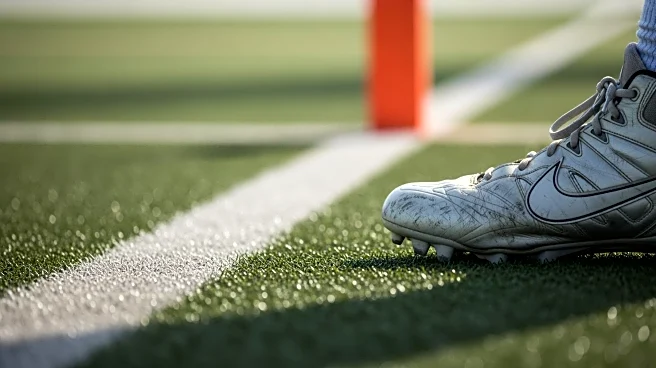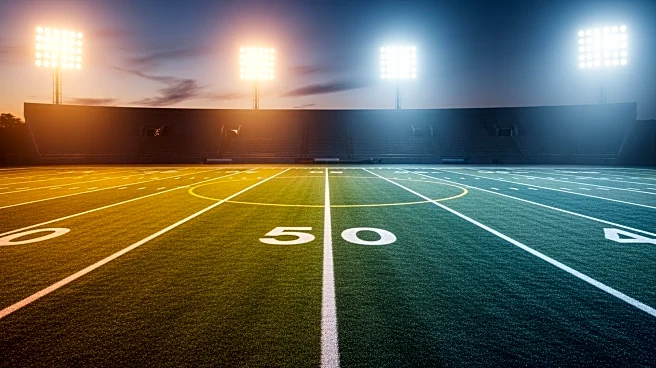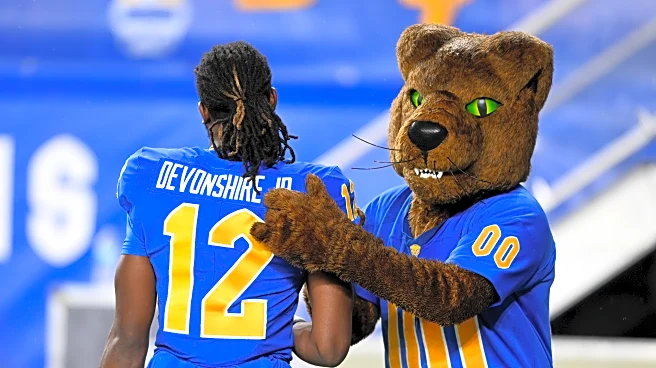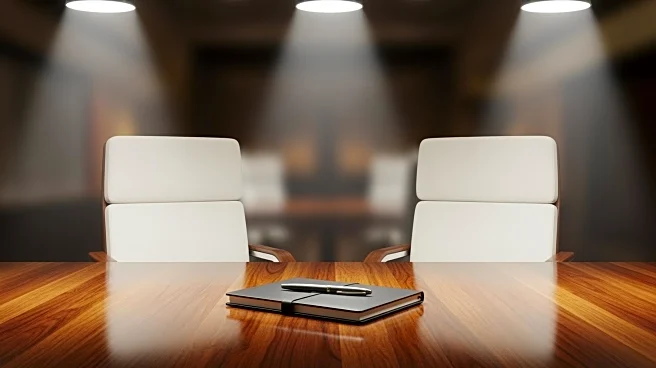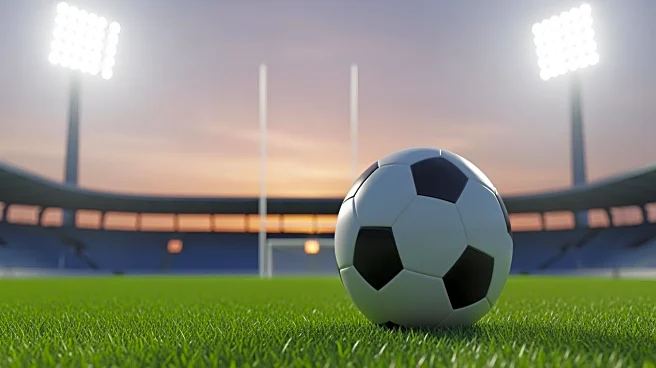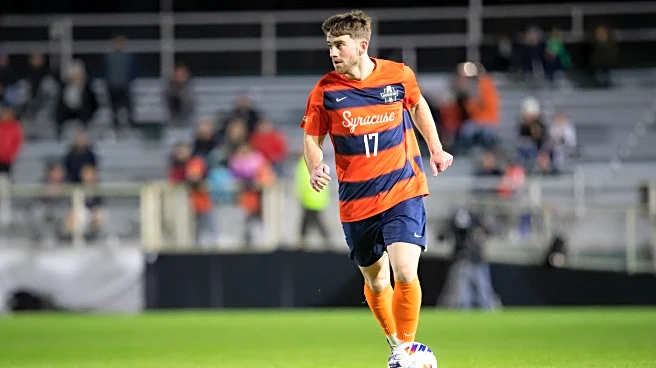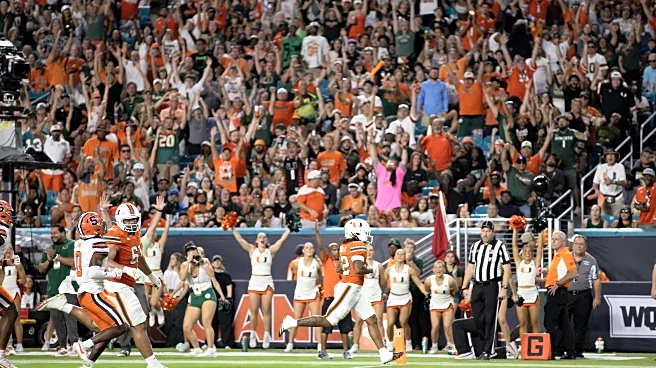What's Happening?
Miami Hurricanes' nickelback Keionte Scott is likely to miss the remainder of the season due to a serious right foot injury, as confirmed by coach Mario Cristobal. Scott sustained the injury during a game against Syracuse on November 8 and was seen wearing
a walking boot on the sidelines in the subsequent game against NC State. Coach Cristobal described the injury as 'heart-wrenching' and 'gut-wrenching,' indicating the severity of the situation. Scott has been a standout player for the Hurricanes, ranking second on the team with 44 tackles, alongside three sacks, an interception, five passes defended, and two fumble recoveries.
Why It's Important?
Keionte Scott's injury is a significant blow to the Miami Hurricanes, as he has been one of the top cornerbacks in the ACC this season. His absence could impact the team's defensive capabilities, potentially affecting their performance in upcoming games. Scott's contributions on the field have been crucial, and his injury may necessitate strategic adjustments by the coaching staff. The loss of a key player like Scott could also influence the team's morale and dynamics, as they navigate the remainder of the season without one of their defensive leaders.
What's Next?
With Scott's likely absence for the rest of the season, the Miami Hurricanes will need to explore alternative defensive strategies and possibly rely on other players to fill the gap left by Scott. Coach Cristobal and his staff may need to make adjustments to the lineup and defensive schemes to compensate for the loss. The team will also have to focus on maintaining their competitive edge in the ACC, despite the setback. The coaching staff's decisions in the coming weeks will be crucial in determining how the Hurricanes adapt to this challenge.
Beyond the Headlines
Scott's injury highlights the physical demands and risks associated with college football, raising concerns about player safety and injury prevention. It also underscores the importance of having depth in the roster to handle unexpected injuries. The situation may prompt discussions within the team and the broader college football community about improving protective measures and support systems for injured players.
